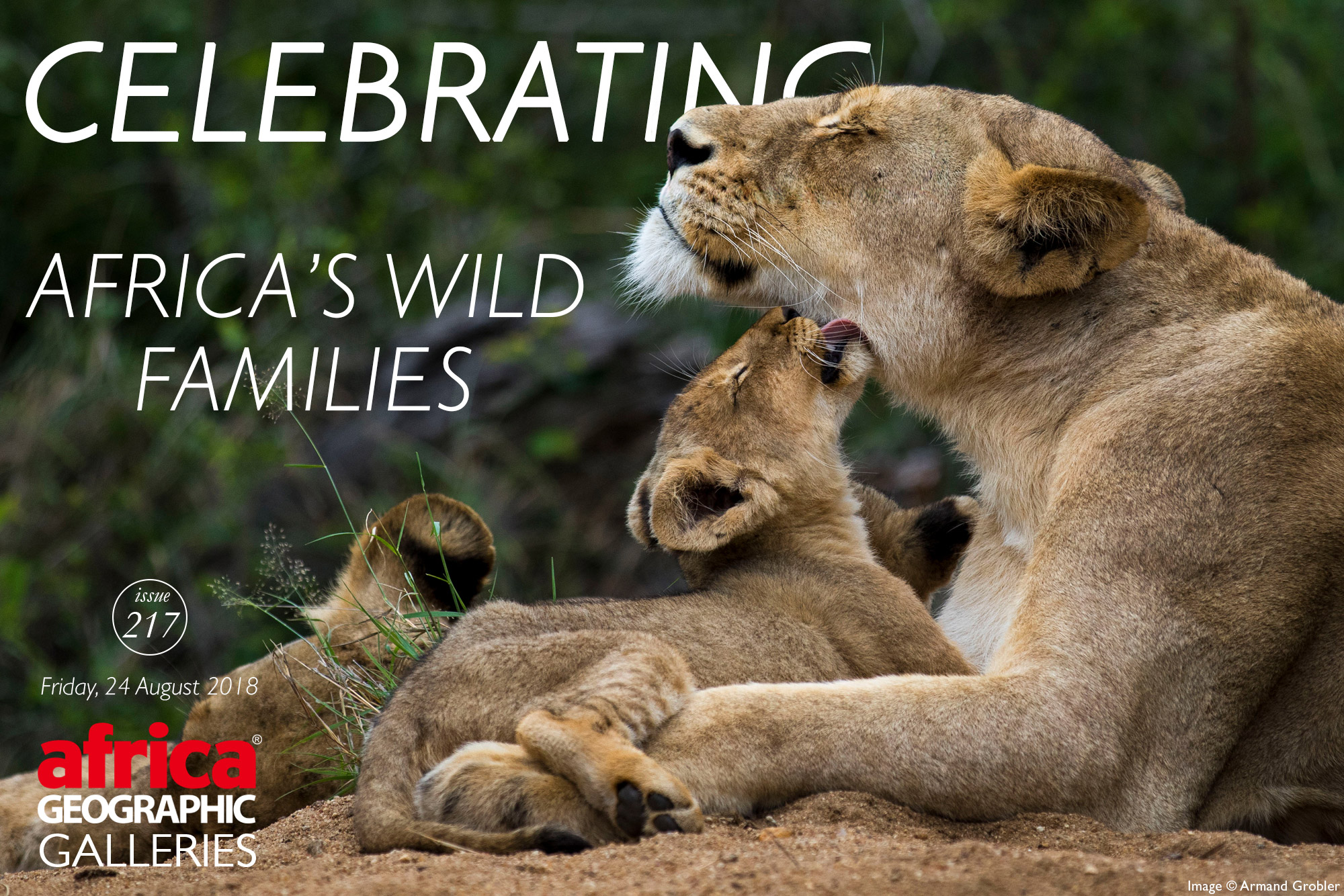
Celebrating Africa’s Wild Babies

It was not too long ago that we featured our first incredibly adorable gallery celebrating Africa’s Wild Babies. After recovering from the exposure of such cuteness, we discovered that there are more “oohs” and “awws” to be had with wild babies, but now with their mums and dads!
What better way to appreciate Africa’s wild but through the close bonds that are shared between babies and their parents – and all captured on camera by some incredibly talented photographers for you to enjoy.
So sit back and relax while you click your way through our gallery of photos taken by some of our Photographer of the Year 2016, 2017 and 2018 entrants.

? A cub finds solace in a pride member’s arms in a reserve in South Africa © Matthew Murray (Photographer of the Year 2017 Top 101)
“An unusual instance in which a lioness brought out her only cub to a wildebeest kill at a very young age. The cub was only just able to walk very short distances and mistook this young male lion’s paw for its mother’s paw, finding a bit of solace in a dangerous situation.” ~ Matthew Murray

? “Don’t worry mom” in Kruger National Park, South Africa © Annemarie du Plessis (Photographer of the Year 2018 Top 101)
“We were spending time with the Shingwedzi baboon troop in Kruger National Park for the first three hours after sunrise. It was beautiful to see the little ones waking up and exploring with the troop. This little guy was still very new to the rest of the troop and always stayed close to its mother. After drinking time, he was lying on her lap, displaying an intimate and lovable bond between mom and baby. When he stretched out to touch mom’s cheek, it was really as if he meant to say: ‘Don’t worry mom.'” ~ Annemarie du Plessis
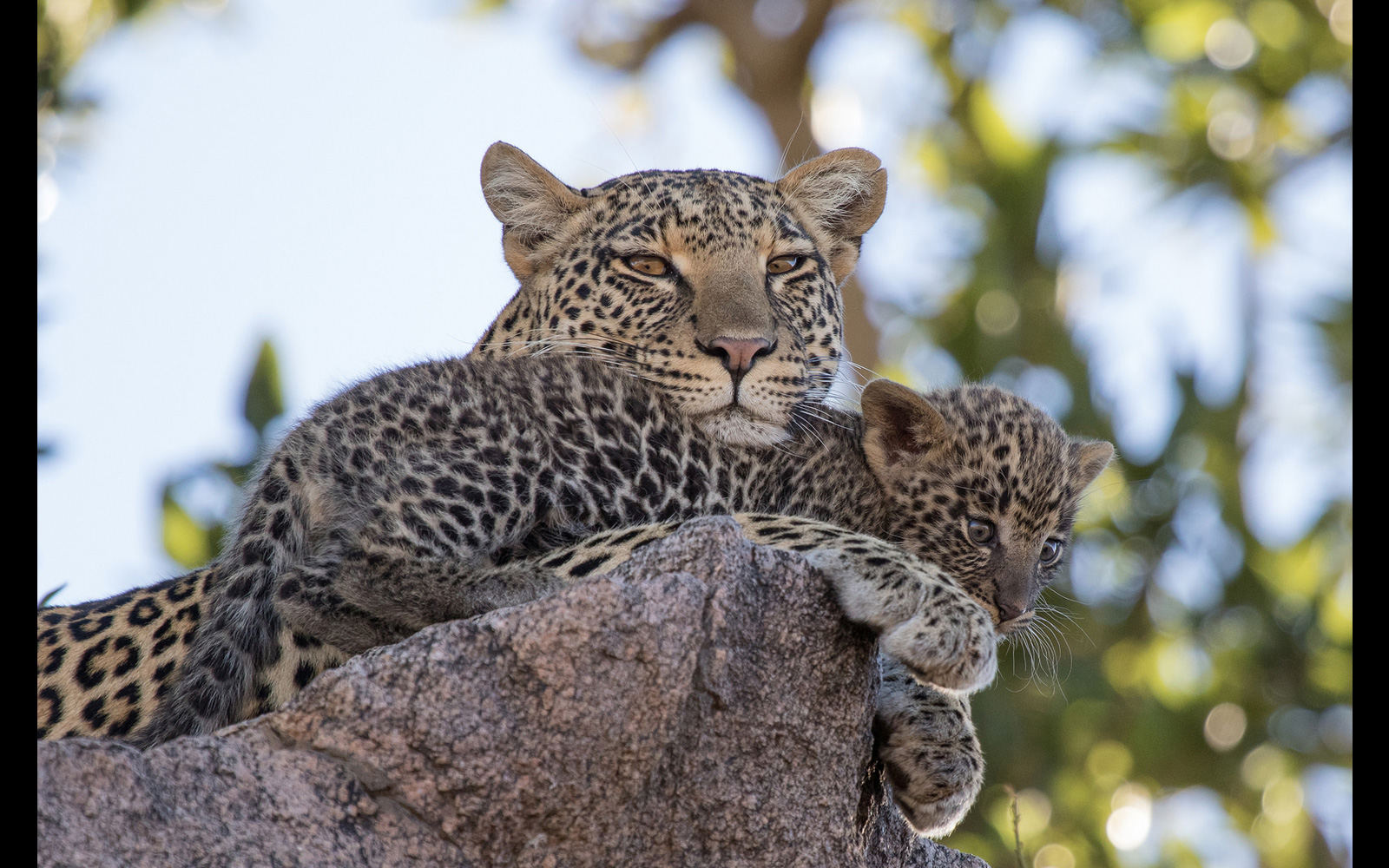
? A leopard mother and her cub rest on a rocky hill in Namiri Plains, Serengeti National Park, Tanzania © Pedro Ferreira do Amaral (Photographer of the Year 2018 entrant)
“No matter how many leopards I see in the wild, I cannot get enough of these fascinating cats. Just like I am in awe of their stealthy hunting skills and sudden bursts of power and ruthlessness, I was humbled by the tenderness with which this mother looked after her single cub. Never had I seen a leopard with such a young cub, and to be able to spend many hours with them over three days was a true privilege. I often think about this cub and hope that it is growing strong and beautiful – just like its mother.” ~ Pedro Ferreira do Amaral
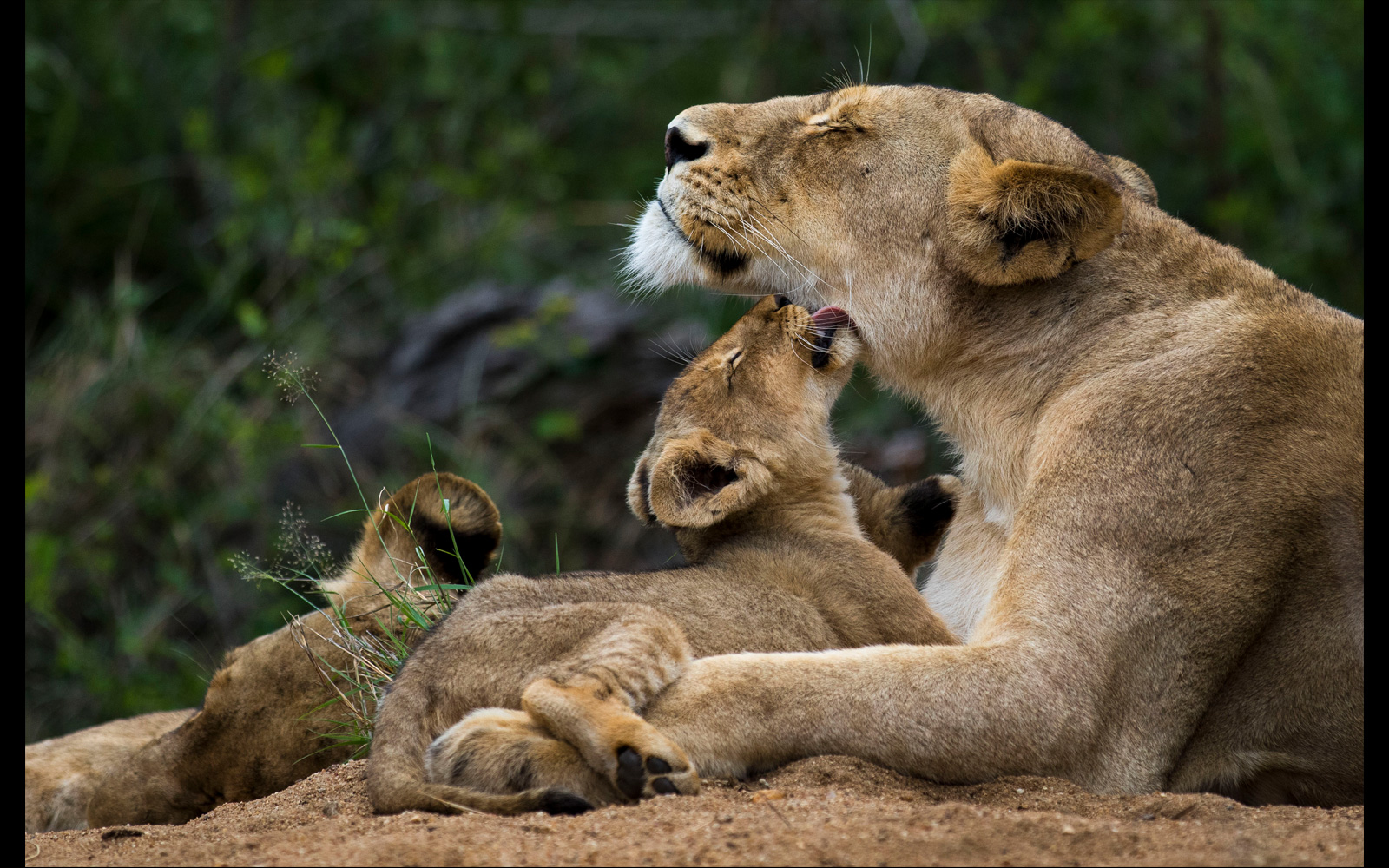
? “A mother’s love” in Manyeleti Game Reserve, South Africa © Armand Grobler (Photographer of the Year 2018 Semi-finalist)
“The bonding between lion pride members is an essential key to their survival and a reason why lions will often outlive other big cats. Lions can often be seen allogrooming, which strengthens family bonds through licking and rubbing up against one another, with both females and males taking part in this activity.” ~ Armand Grobler
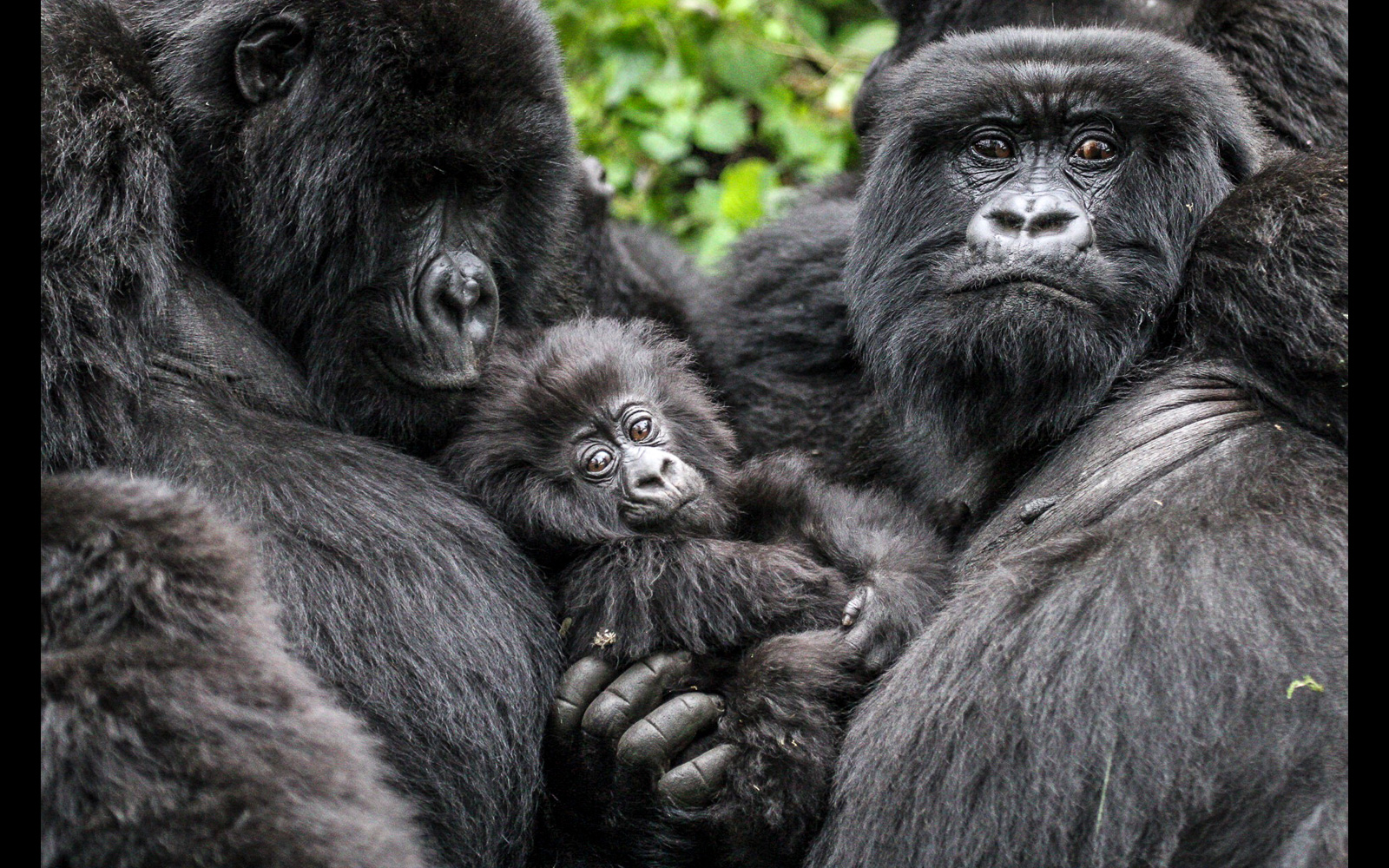
? A baby mountain gorilla gets all the attention in Volcanoes National Park, Rwanda © Stuart Sinclair (Photographer of the Year 2018 First runner-up)
“This photo was taken in Volcanoes National Park in Rwanda. Walking into this family of gorillas was spectacular. They were so comfortable in our presence, very relaxed and observant. It was amazing to see their strong family bond, and this photo highlights that. After a short time, they played and fed in front of us. Some of the youngsters ran through the group, seemingly knowing that it would cause a stir, and enjoying the reaction!” ~ Stuart Sinclair

? A meerkat with baby in Tswalu Kalahari Private Game Reserve, South Africa © Andrea Galli (Photographer of the Year 2018 entrant)
In a colony of meerkats, the whole family, including the father and siblings, all take turns to help raise the babies (or pups). Female meerkats give birth to one to eight babies at a time, but it is more common for them to have three to four offspring at a time. Read more interesting facts about meerkats here.
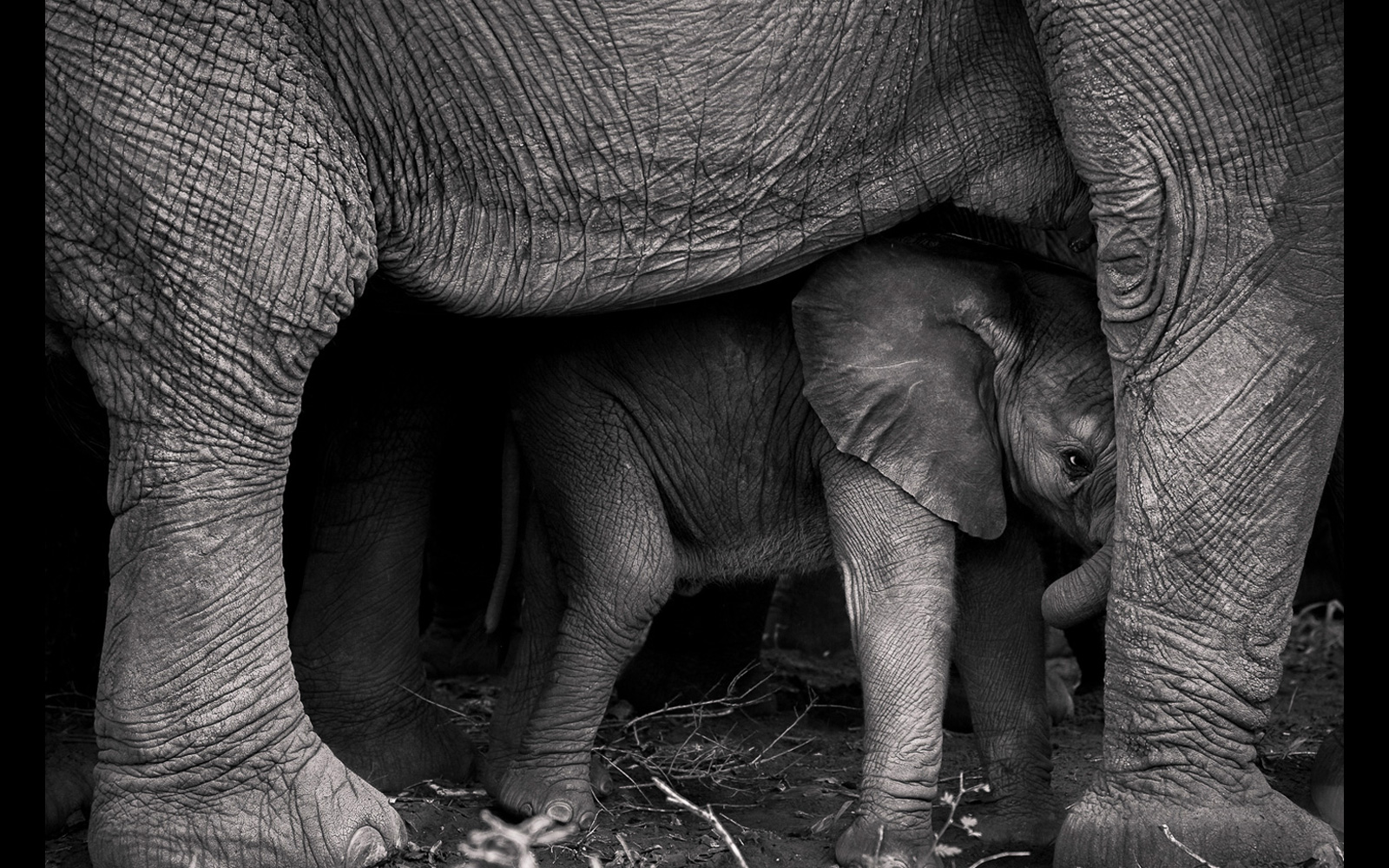
? “Unsteady but secure” in Skukuza, Kruger National Park, South Africa © Thinus Schoeman (Photographer of the Year 2017 Top 101 Finalist)
“A family of elephants were resting in the shade of large riverine trees on the riverbank, approximately 8 to 10 metres from the road. I spotted this very young baby elephant, still unsure on its feet, secure between the elephant cow’s legs. I liked the natural framing the body and legs of the elephant cow provided and had an image in mind. I had time to take four photos before the baby turned away and disappeared deeper into the herd. It was a privilege to witness how protective the family was of this baby elephant.” ~ Thinus Schoeman

? “Can I tell you a secret?” in Kruger National Park, South Africa © Ricci Goldstein (Photographer of the Year 2017 entrant)
“On a misty morning drive towards Mopani, I was excited to be able to spot and photograph a hyena clan. Two important factors stood out for me in making this sighting a photographer’s dream. Firstly, the mist had slowly evaporated, and a soft light fell upon the savannah. This was coupled with an adorable interaction between a mother and her young.” ~ Ricci Goldstein ~ Read more about the sighting here.
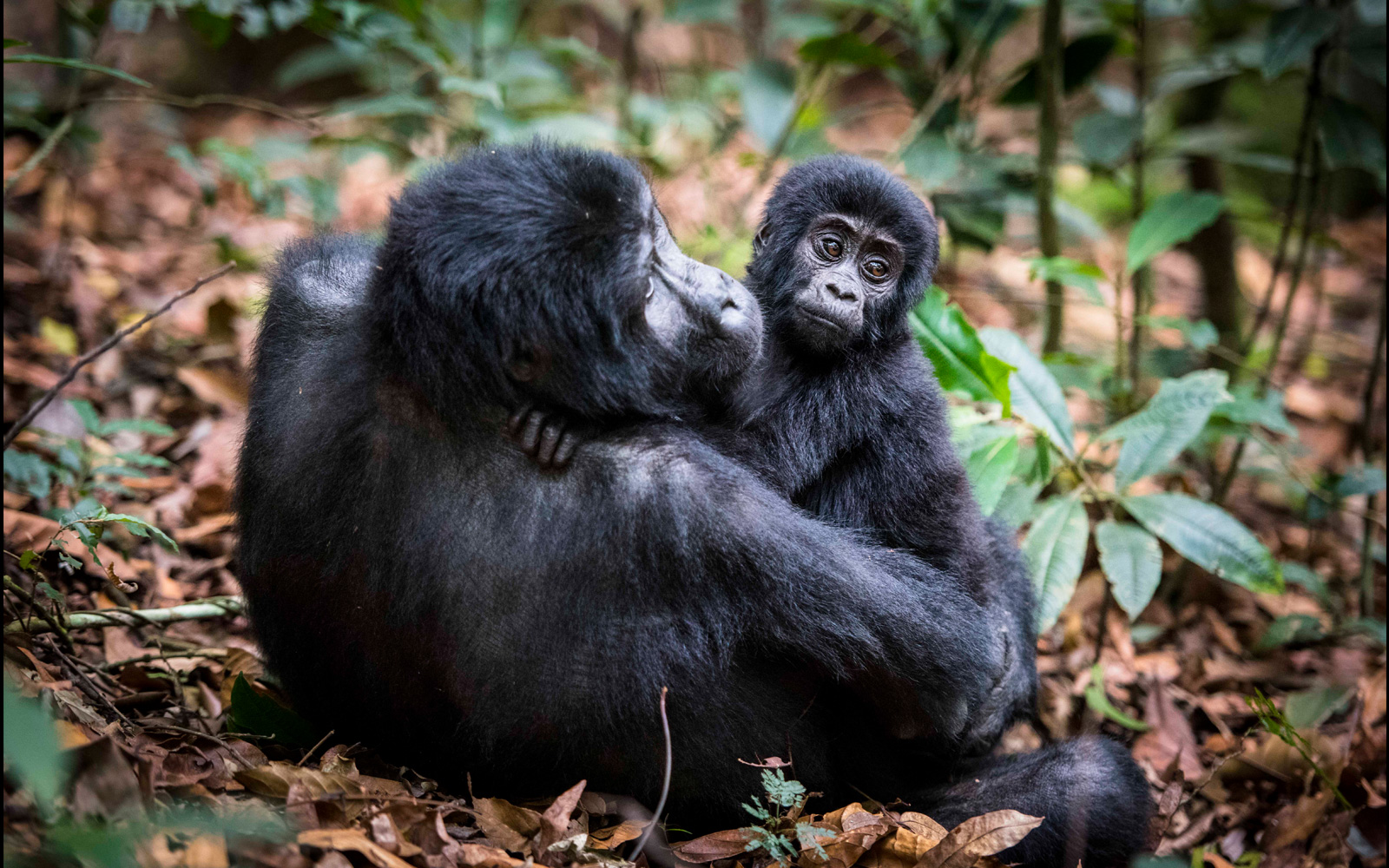
? A gorilla and her young in Bwindi Impenetrable National Park, Uganda © Andrea Galli (Photographer of the Year 2018 entrant)
Uganda is home to about half the world’s population of mountain gorillas, with the majority of them living in Bwindi Impenetrable Forest National Park. Bwindi has as many as 11 habituated gorilla families available for tourists to track. Read more about the different gorilla families found in Bwindi here.
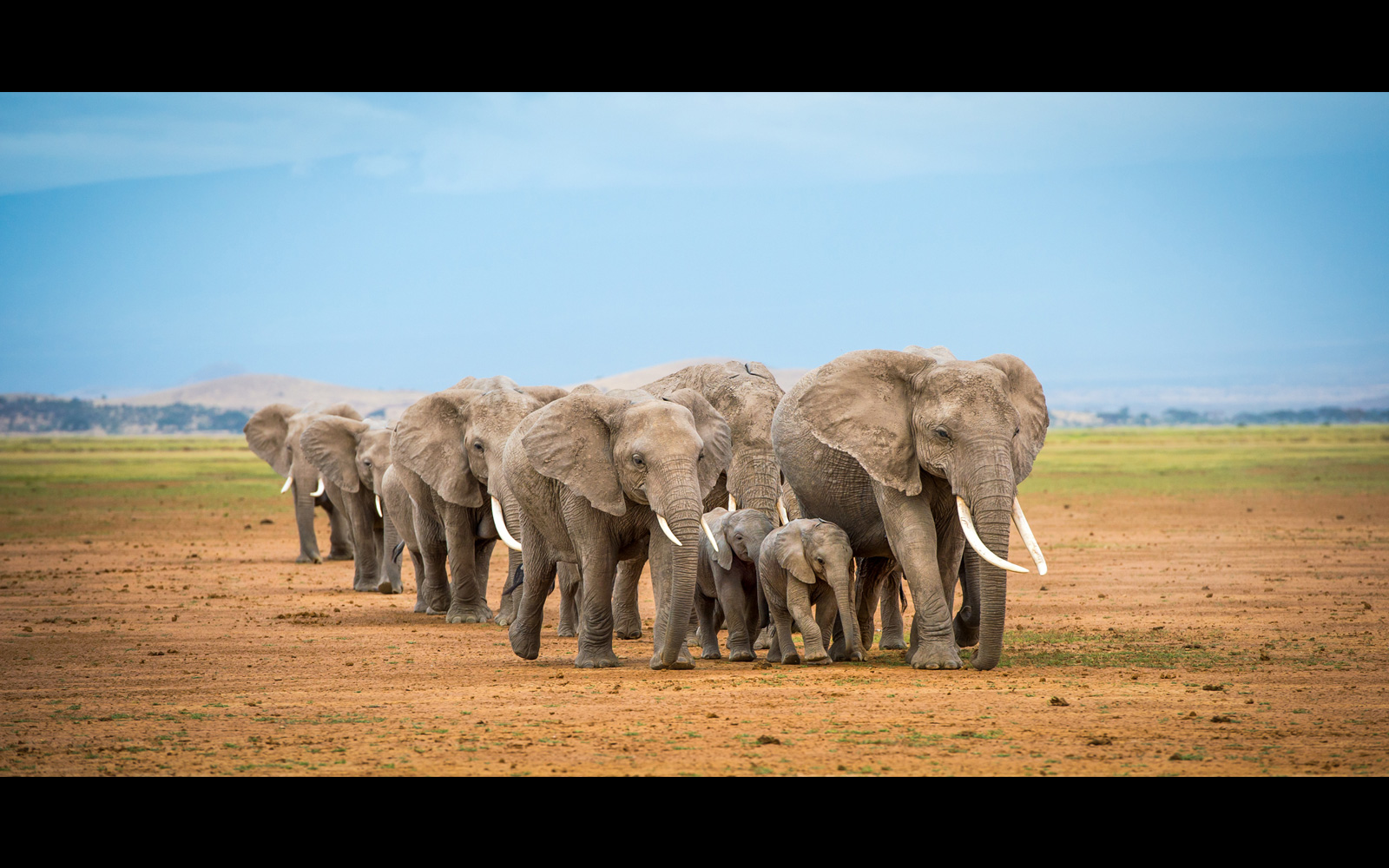
? “The crossing” – a matriarch and her family make their way over a dry lake bed in Amboseli National Park, Kenya © Dana Kennedy (Photographer of the Year 2018 entrant)
“One of my favourite places in all of Africa is Lake Amboseli – where large families of elephants journey along the dry and well-travelled region. On this evening game drive, a matriarch and her family were making the long journey on the dry lake bed, and I had the immense privilege of capturing this image. It was a magical moment while watching the quiet trek in the fading light.” ~ Dana Kennedy
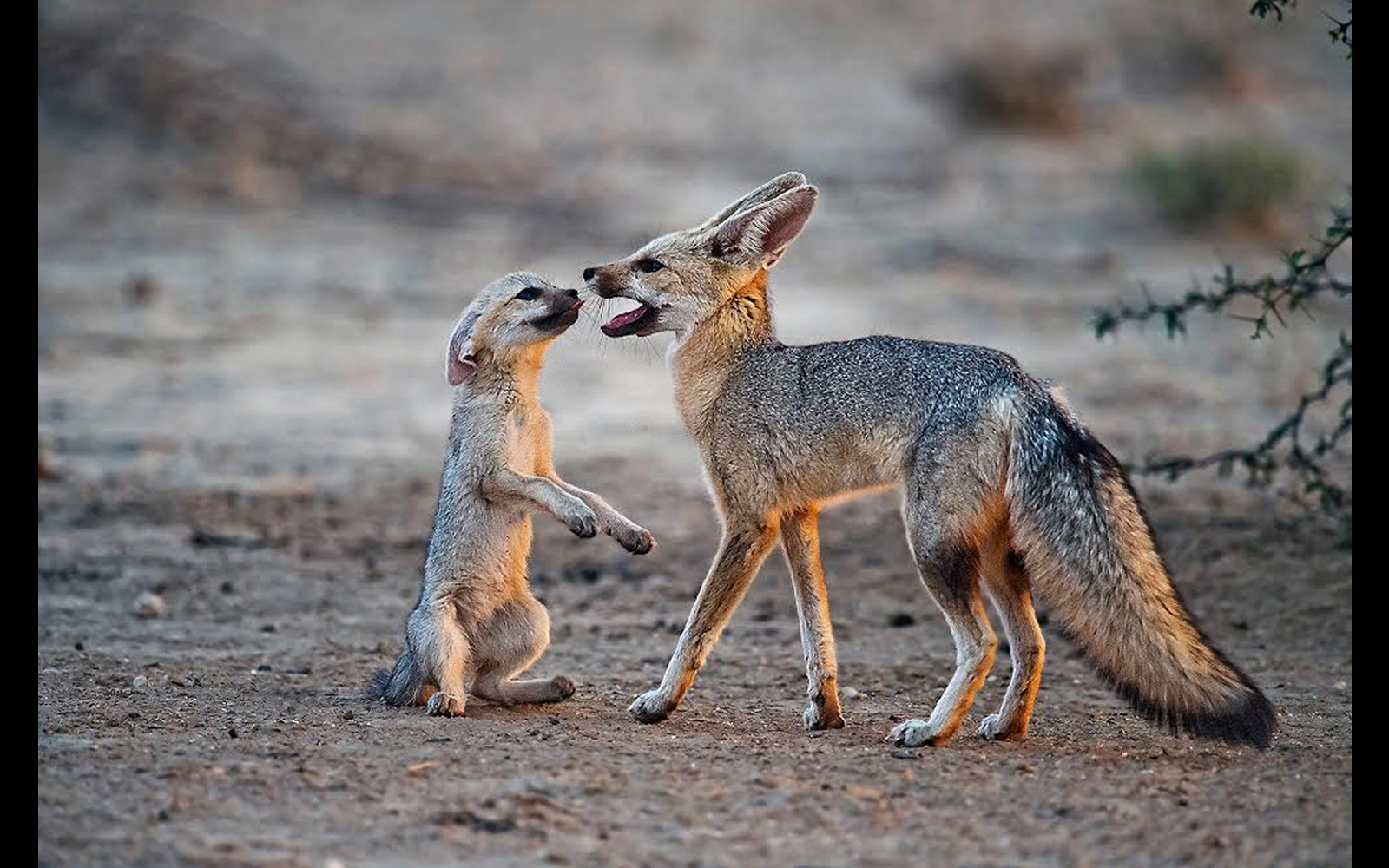
? A Cape fox pup pleads for food from his father in Kgalagadi Transfrontier Park, Botswana/South Africa © Johan J. Botha (Photographer of the Year 2017 Top 101)
“I was photographing Cape fox pups playing at their den. Their father brought them rats and lizards as food from time to time, while the mother guarded them during the daytime. This pup did not get anything this time around and was pleading to his father for something to eat in typical Cape fox manner: licking the parents’ face.” ~ Johan J. Botha
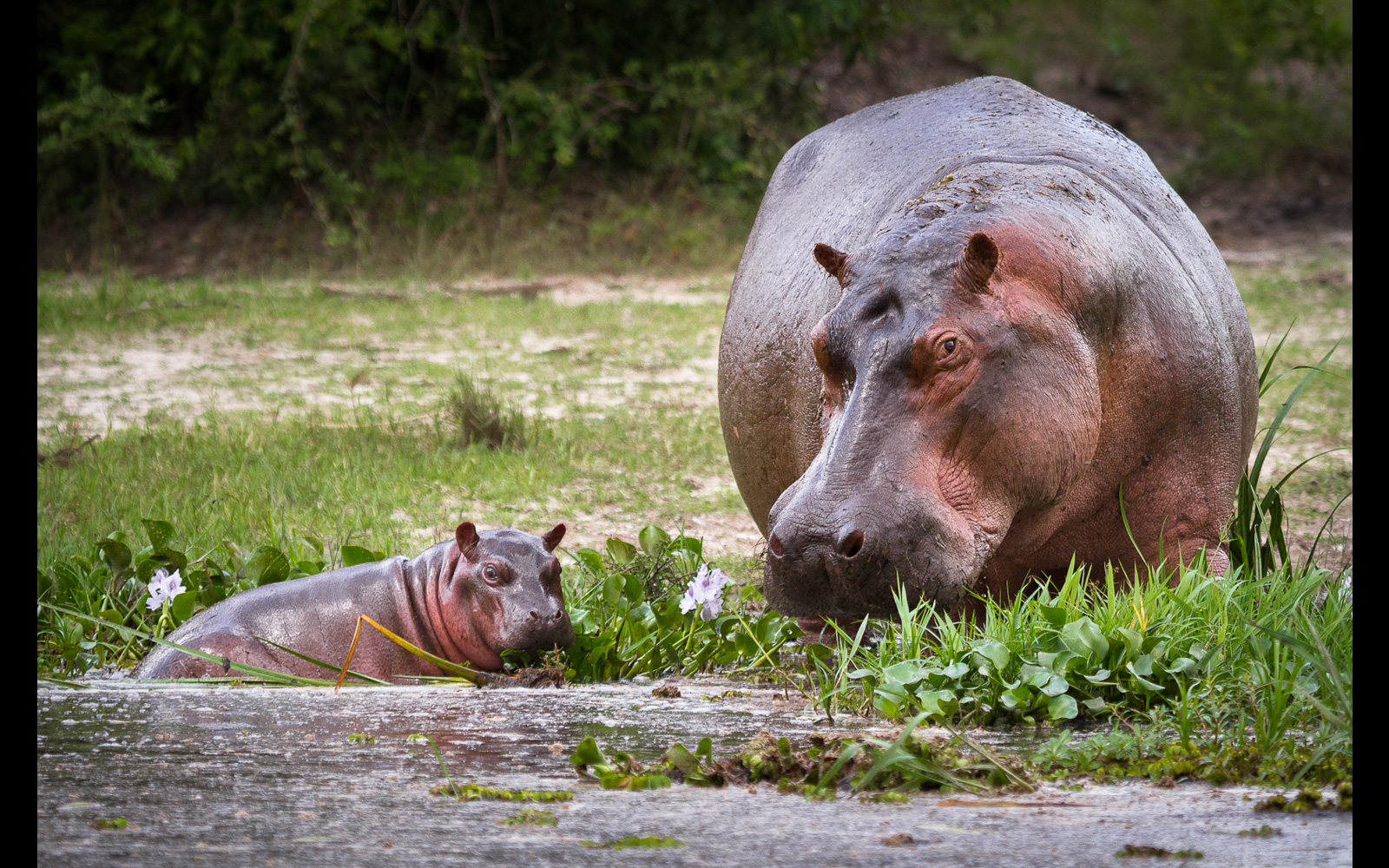
? A protective hippo mother and baby in Murchison Falls National Park, Uganda © Alessandro Tramonti (Photographer of the Year 2016 entrant)
Female hippos have a gestation period of eight months and usually have only one baby at a time. A baby hippo, or calf, weighs about 23-50 kg (50-110 lbs) when born. Hippos can be extremely aggressive and territorial, and a mother hippo won’t hesitate to protect its baby. Read more about hippos and dramatic river disputes here.

? A lion family at sunset in Maasai Mara National Reserve, Kenya © Anja Gröbel (Photographer of the Year 2017 Finalist)
“We were on an evening game drive with our guide when we got caught by a storm. Once it had cleared, we slowly drove back to camp, and as we passed by a ridge, we heard a lion roar close by from behind a bush. Suddenly, a pride of around 14 lions appeared from behind a bush and moved into the sunset along the ridge, giving us this surreal Disney scene.” ~ Anja Gröbel
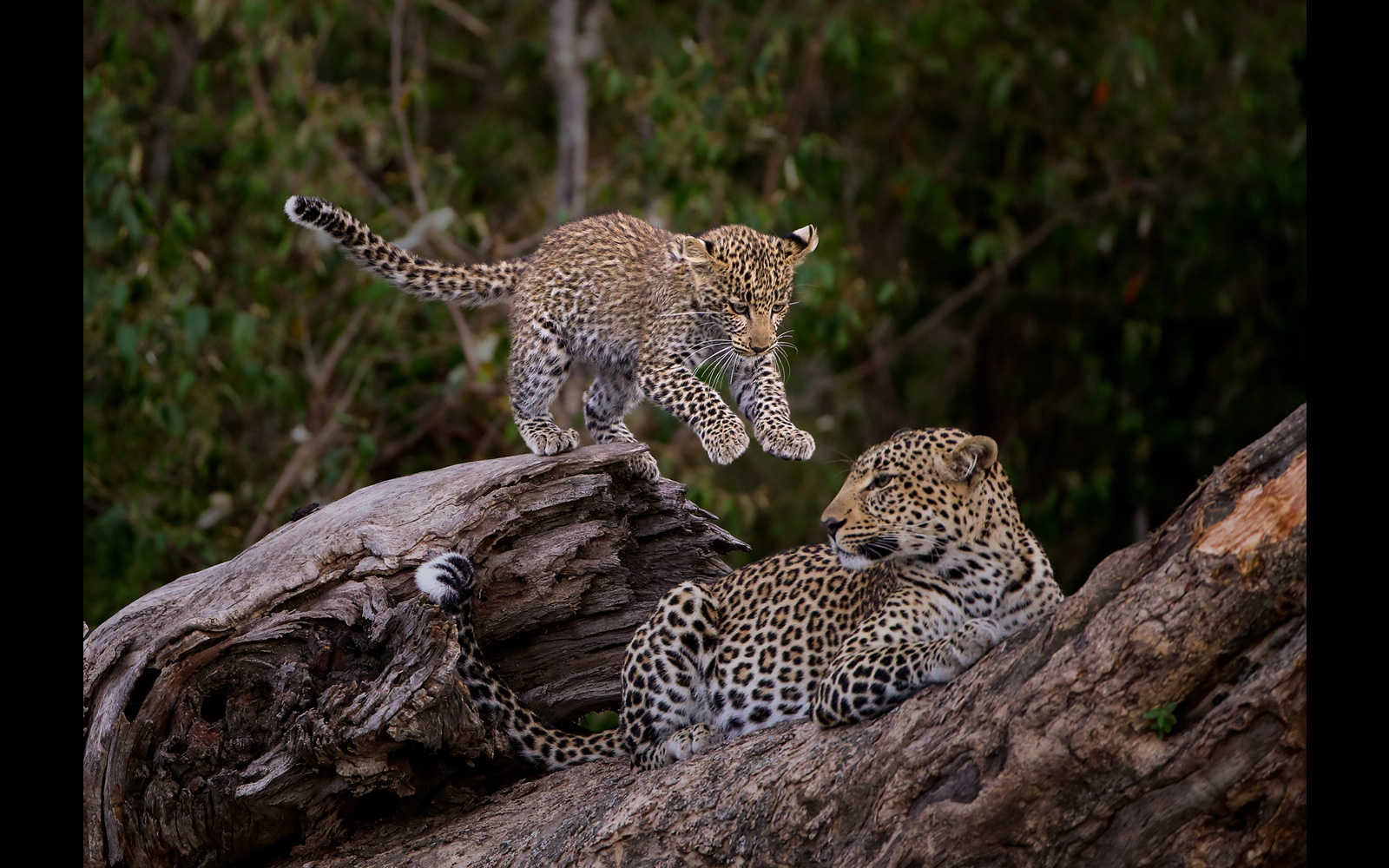
? A leopard cub about to surprise mum in Olare Motorogi Conservancy, Kenya © Andy Howe (Photographer of the Year 2018 entrant)
A leopard’s hunting technique is to either ambush its prey or to stalk it. In either instance, it tries to get as close as possible to its target. It then makes a brief and explosive charge (up to 60km/h), pouncing on its prey and dispatching it with a bite to the neck. Read more interesting facts about leopard here.
To comment on this story: Login (or sign up) to our app here - it's a troll-free safe place 🙂.![]()






